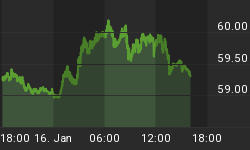I have a book on my shelf, called The Money Market, by Marcia Stigum. It covers the workings of the capital markets, from basic instrument details of bonds, commercial paper, and so on to detailed discussions of how banks operate in the money markets to service client needs. There are chapters on futures, options, and swaps, government securities, repo markets, and bankers' acceptances. When I first came into the market, in 1990, I bought a copy of this book and read it cover to cover - all 1250 pages of it. Together with Money Market Calculations: Yields, Break-Evens, and Arbitrage (also Stigum), it was absolutely essential reading for people entering the bond market.
The third edition was published in 1989, and is fairly out-of-date by now. Unfortunately, Ms. Stigum died in 2003 and so the fourth edition (now called Stigum's Money Market), although updated by Anthony Crescenzi, is not quite on par with the prior versions. I would still recommend the fourth edition, however, to anyone who is actively considering entering the bond markets as a career.
But I have another book that I would recommend both to the people who are thinking of trying to get onto a Wall Street trading floor to pursue a career in finance as well as to those people who are just curious about how the trading floor really works. It is called, appropriately enough, How the Trading Floor Really Works. It is published by Bloomberg Financial, and written by Terri Duhon. (Disclosure: I worked with Terri for a brief time when we were both at JP Morgan, so I know she is writing from a position of knowledge on the topic).
This is not meant to be a mechanically precise book, like Stigum's books on money market calculations. For example, in the section on derivatives, Duhon dispenses with such details as the fact that in a USD interest rate swap Libor is typically paid quarterly on an actual/360 day count basis, while the fixed side is paid semi-bond. That's a detail that is utterly irrelevant for the purposes of this book, which is to illustrate how and why a Wall Street broker/dealer does what it does: how it makes money, how it services clients, how it balances the short-term profit and long-term profit motives, and what the different functions on the trading floor are (and how they fit together). The book begins with chapters on "What Are Financial Markets," and "What Role Do Banks Play in Financial markets," and later discusses "How Do Traders Make a Market," "How Is Proprietary Trading Different from Market Making," and "What Is the Relationship Between Sales and Trading?" The book addresses cash, derivatives, how "structurers" and "quants" are engaged in the bank's business, and how risk is managed.
Crusty Wall Street veterans will not find anything in here that is terribly surprising, but most people with a "Main Street" view of Wall Street probably will. One really neat feature of the book is the generous sprinking of market anecdotes describing actual episodes on various trading floors (thankfully without names). These give the book an honest verisimilitude - I can attest that these things actually happen on trading floors, and indeed I am pretty sure that I was actually present for one of the vignettes.
I really enjoyed the book. If you are curious how Wall Street actually works - this is a book you should consider reading (and it's only about 1/3 the cost of the Stigum book!). You can go to the Amazon page from the link above.
















